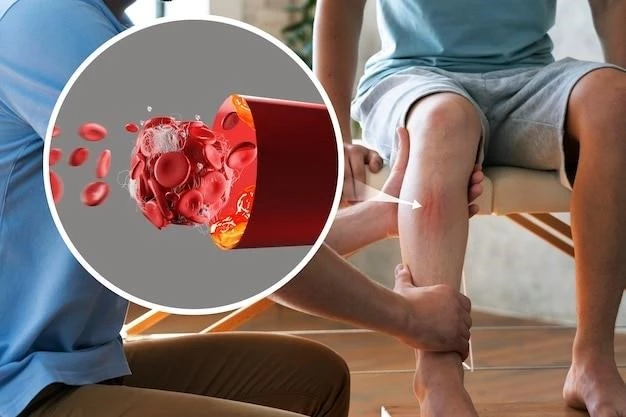Understanding Acrodermatitis Enteropathica
Causes of Acrodermatitis Enteropathica

Acrodermatitis Enteropathica is primarily caused by a genetic mutation affecting the absorption of zinc in the body. This mutation leads to a zinc deficiency, which results in the characteristic skin lesions and other symptoms associated with the condition. In rare cases, Acrodermatitis Enteropathica can also occur secondary to conditions that impact zinc absorption, such as inflammatory bowel disease, celiac disease, or liver cirrhosis. Environmental factors like a low-zinc diet or excessive intake of phytates, which inhibit zinc absorption, can also contribute to the development of Acrodermatitis Enteropathica.
Symptoms and Signs of Acrodermatitis Enteropathica
The hallmark symptom of Acrodermatitis Enteropathica is the presence of skin lesions, typically around the mouth, eyes, and anogenital area. These lesions can be characterized by redness, inflammation, crusting, and even blistering. Other signs include alopecia (hair loss), diarrhea, irritability, delayed wound healing, and growth retardation in children. In severe cases, individuals may also experience susceptibility to infections due to compromised immune function. Early recognition of these symptoms is crucial for timely diagnosis and management of Acrodermatitis Enteropathica.
Diagnosis of Acrodermatitis Enteropathica
Diagnosing Acrodermatitis Enteropathica involves a combination of clinical evaluation, medical history review, and biochemical testing. Dermatological examination to assess skin lesions and associated symptoms is essential. Laboratory tests to measure serum zinc levels, along with other blood tests like alkaline phosphatase and amino acid profiles, can help confirm a zinc deficiency. Genetic testing may be conducted to identify mutations in genes related to zinc metabolism. Additionally, a dietary assessment and evaluation of zinc intake can provide valuable insights into the diagnosis of Acrodermatitis Enteropathica.
Treatment Options for Acrodermatitis Enteropathica
The primary treatment for Acrodermatitis Enteropathica involves zinc supplementation to address the underlying deficiency. This supplementation can be administered orally or intravenously, depending on the severity of the condition and the individual’s ability to absorb zinc. Alongside zinc therapy, maintaining a balanced diet rich in nutrients like animal proteins, whole grains, and dairy products can support overall nutritional health. In severe cases, topical treatments and skin care management may be necessary to address skin lesions and prevent secondary infections; Regular monitoring of zinc levels and symptom progression is essential to adjust treatment plans accordingly.
Nutritional Deficiencies Linked to Acrodermatitis Enteropathica
Acrodermatitis Enteropathica is primarily associated with a deficiency in zinc, an essential mineral crucial for various physiological functions. Zinc deficiency results in impaired immune function, delayed wound healing, growth retardation, and characteristic skin lesions seen in Acrodermatitis Enteropathica. Additionally, deficiencies in other nutrients like proteins, vitamins, and minerals can exacerbate the symptoms and impact overall health outcomes in individuals with this condition. Maintaining a well-balanced diet rich in essential nutrients is fundamental in preventing and managing nutritional deficiencies linked to Acrodermatitis Enteropathica.
Management of Acrodermatitis Enteropathica in Infants
Managing Acrodermatitis Enteropathica in infants requires a multidisciplinary approach involving pediatricians, dermatologists, and nutritionists. Zinc supplementation in appropriate dosages is crucial to address the underlying zinc deficiency. Breastfeeding or providing zinc-fortified formula can support infants’ nutritional needs. Regular monitoring of growth, development, and zinc levels is essential to ensure optimal outcomes. Caregivers should be educated on the importance of adhering to treatment plans and maintaining a nutrient-rich diet for the infant’s overall health and well-being. Early intervention and ongoing management are key in effectively addressing Acrodermatitis Enteropathica in infants.
Research Advances in Understanding Acrodermatitis Enteropathica
Ongoing research into Acrodermatitis Enteropathica has contributed to a deeper understanding of the genetic and molecular mechanisms underlying the condition. Studies have identified novel genes involved in zinc metabolism and absorption, shedding light on potential therapeutic targets. Advances in diagnostic techniques, such as genetic testing and biomarker identification, have improved early detection and personalized treatment strategies. Furthermore, research focusing on the interaction between zinc deficiency and immune function offers insights into the broader implications of micronutrient deficiencies. Collaborative efforts among researchers worldwide continue to drive progress in unraveling the complexities of Acrodermatitis Enteropathica.
Importance of Early Detection and Intervention for Acrodermatitis Enteropathica
Early detection and intervention play a pivotal role in the management of Acrodermatitis Enteropathica, as timely treatment can prevent complications and improve outcomes. Recognizing the characteristic symptoms, conducting thorough diagnostic assessments, and promptly initiating zinc supplementation are essential steps in mitigating the effects of the condition. In infants, early management is critical for supporting healthy growth and development. Additionally, early detection can help prevent long-term health consequences associated with zinc deficiency. Healthcare providers and caregivers must remain vigilant for signs of Acrodermatitis Enteropathica to ensure that interventions are implemented promptly for optimal therapeutic efficacy.
